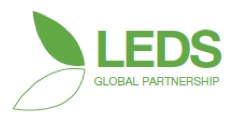The Low Emissions Development Global Partnership (LEDS GP) Working Group on Subnational Integration (SNI-WG) published a paper summarizing the group's activities over the past two years, and focusing on the role of non-state actors to help achieve national and international development goals.
The working paper, ‘The coordination and vertical integration of climate actions,' explains that while a range of actions by non-state actors contribute to filling the emissions gap, significant benefits can be gained by improving the coordination and vertical integration of subnational climate actions.
 26 October 2015: The Low Emissions Development Global Partnership (LEDS GP) Working Group on Subnational Integration (SNI-WG) has published a paper summarizing the group’s activities over the past two years, focusing on the role of non-state actors to help achieve national and international development goals. The working paper, titled ‘The coordination and vertical integration of climate actions,’ explains that while a range of actions by non-state actors contribute to filling the emissions gap, significant benefits can be gained by improving the coordination and vertical integration of subnational climate actions.
26 October 2015: The Low Emissions Development Global Partnership (LEDS GP) Working Group on Subnational Integration (SNI-WG) has published a paper summarizing the group’s activities over the past two years, focusing on the role of non-state actors to help achieve national and international development goals. The working paper, titled ‘The coordination and vertical integration of climate actions,’ explains that while a range of actions by non-state actors contribute to filling the emissions gap, significant benefits can be gained by improving the coordination and vertical integration of subnational climate actions.
According to the paper, the coordination and vertical integration of subnational climate actions can: raise national government ambitions for more aggressive mitigation commitments; help alleviate domestic political constraints; scale up additional mitigation opportunities at the subnational level; accelerate implementation of national targets, strategies and development priorities by “localizing” them, which can increase co-benefits by linking local priorities with development objectives; create an enabling environment for infrastructure finance and private sector investments; and expand and accelerate the flow of international public and private climate finance to cities, urban infrastructure and local priorities.
The paper finds that cooridinating and vertically integrating climate initiatives would not only increase the chances of achieving more ambitious intended nationally determined contributions (INDCs), but also improve synergies with national development objectives and other multilateral agreements.
The paper also discusses lessons learned on multi-level governance from the Millennium Development Goals (MDGs) and disaster risk reduction (DRR).
The LEDS GP uses knowledge and resources from more than 160 countries, as well as international donor and technical organizations, to strengthen climate-resilient, low-emission development efforts globally, and to strengthen support and leadership of climate-resilient LEDS by countries in all regions, foster effective implementation of LEDS, and stimulate the development of new LEDS. A global secretariat consisting of the Climate and Development Knowledge Network (CDKN) and the National Renewable Energy Laboratory (NREL) coordinates LEDS GP implementation, knowledge management, and outreach. [Publication: The Coordination and Vertical Integration of Climate Actions] [LEDS GP Website] [Subnational Integration Working Group] [Working Paper Website]